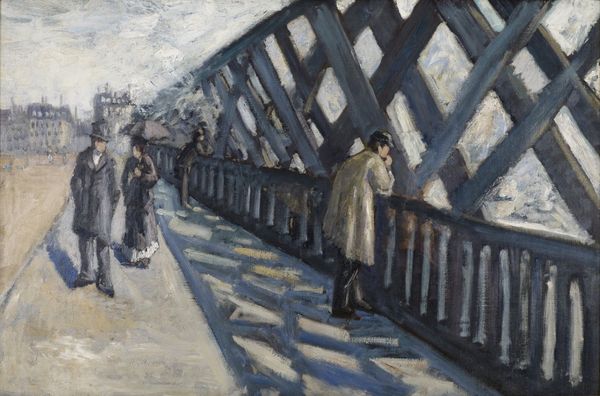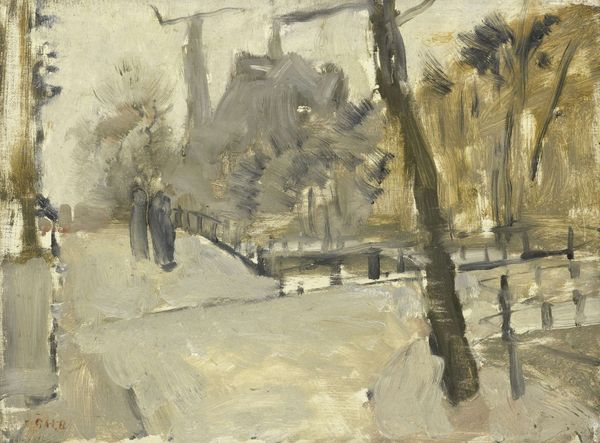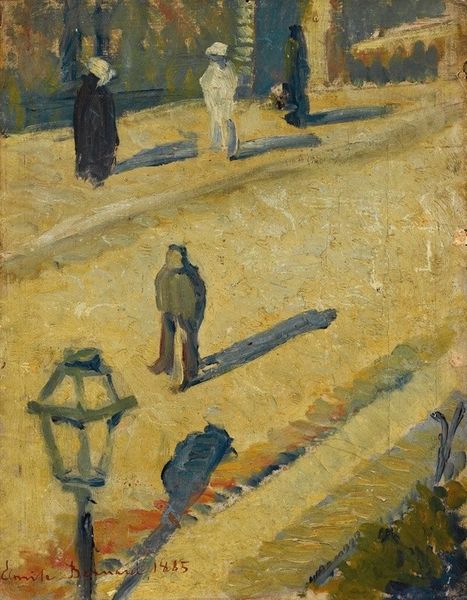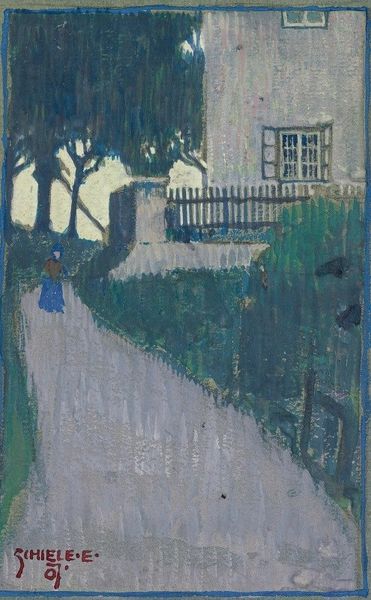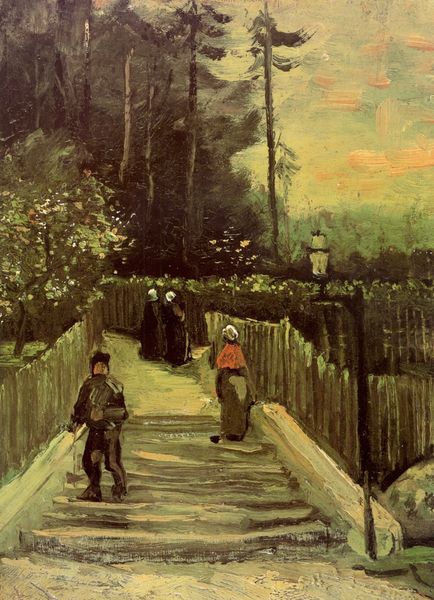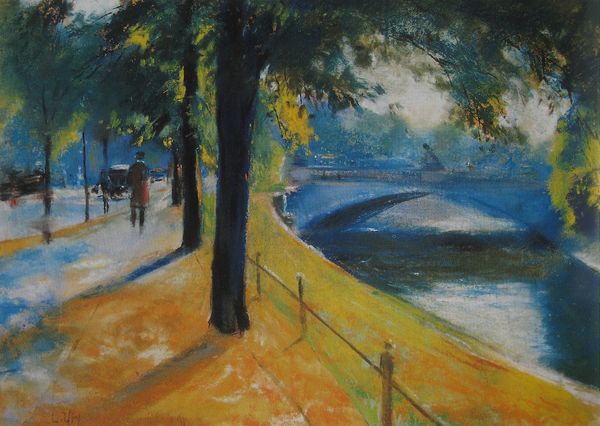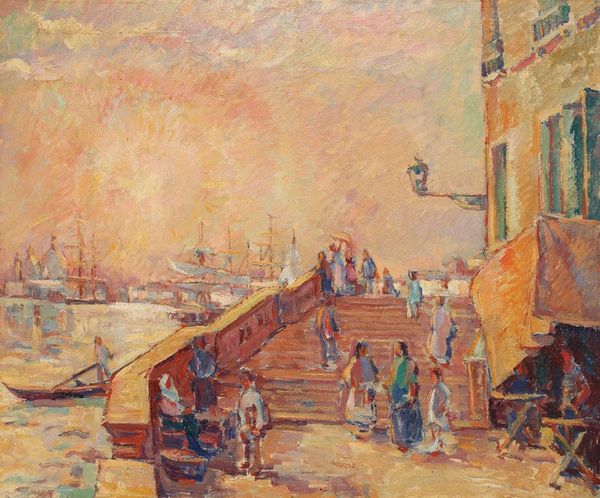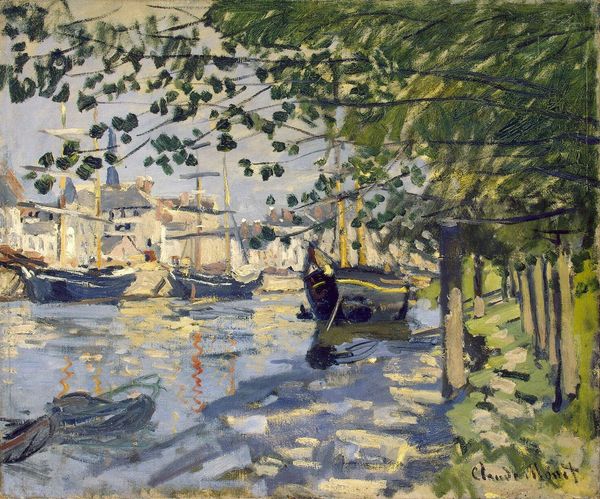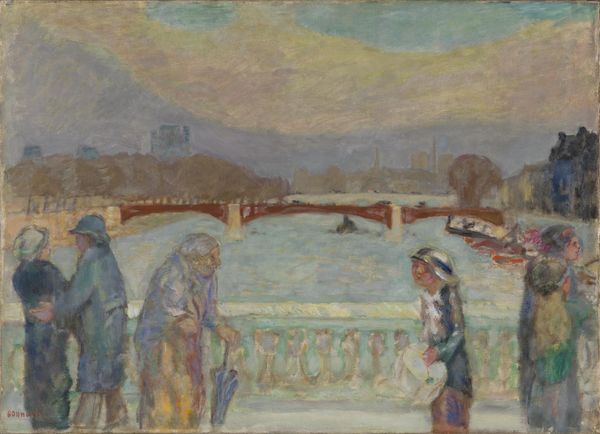
Terrace and Observation Deck at the Moulin de Blute-Fin, Montmartre Possibly 1887
0:00
0:00
painting, oil-paint
#
portrait
#
painting
#
impressionism
#
oil-paint
#
landscape
#
oil painting
#
cityscape
#
post-impressionism
#
watercolor
Copyright: Public Domain: Artvee
Curator: This is Vincent van Gogh’s "Terrace and Observation Deck at the Moulin de Blute-Fin, Montmartre," likely painted in 1887 using oil paint. My immediate reaction is that the textures and subtle tones evoke a hazy, somewhat melancholy atmosphere. Editor: Yes, it possesses a subdued quality. We should discuss how Van Gogh rendered this bustling area. What insights can be drawn from the work’s material qualities and process of its creation? Curator: The brushwork, visible in every element, from the lampposts to the figures on the observation deck, is crucial. We see a move away from the pure impressionist technique here, yet it also feels very influenced by it, particularly when we consider his time studying with Cormon. It speaks to a period where he's absorbing influences yet pushing towards his individual method of production. Editor: Absolutely. The historical moment matters, too. Montmartre in 1887 was transforming—shifting from rural outskirts to a district marked by entertainment and vice. We can unpack the idea of class and spectacle here. Curator: And we mustn't forget that, in the 19th century, many landscape painters actually built their reputations via portraying cityscapes and the changing metropolis. Van Gogh utilizes the urban setting as more than just a background; instead, his material handling almost seems to transform the essence of it, becoming this wistful representation. He manipulates oil paint to depict that sense of modernity. Editor: Exactly. I am struck by the social dynamics within this seemingly simple vista. There's this division within the space itself: a lower section open to the public and the higher deck implying class privilege with that separate viewpoint of Paris. Curator: Do you believe this reflects his critiques of society and capitalism during the period? Editor: It’s hard to separate the artist from the work. His struggles, his sympathies. But perhaps we can also perceive it more as him acknowledging the reality of it all, documenting what was there. This is, after all, still Van Gogh testing the art world norms. His own commodification. Curator: Indeed. So this image presents an individual perspective, both material and sociopolitical. Editor: Perhaps it presents several perspectives simultaneously, interwoven and complex. Curator: A lovely way to conclude!
Comments
No comments
Be the first to comment and join the conversation on the ultimate creative platform.
